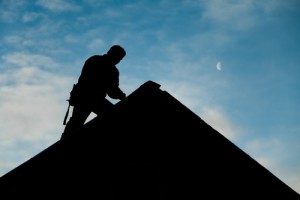 Vapor retarders protect the roof structure from the effects of moisture infiltrating from the inside out. Typically, we think of roof coverings to prevent moisture leaking in. However, roof structures are vulnerable to continuous exposure to interior water vapor migrating upward and out of the building. If the building is slightly pressurized, the effect is intensified as water vapor tends to be “pumped” by the force of interior air pressure into every minute gap or opening in the underside of the roof. When water vapor enters the roof structure on an ongoing basis, nothing good happens.
Vapor retarders protect the roof structure from the effects of moisture infiltrating from the inside out. Typically, we think of roof coverings to prevent moisture leaking in. However, roof structures are vulnerable to continuous exposure to interior water vapor migrating upward and out of the building. If the building is slightly pressurized, the effect is intensified as water vapor tends to be “pumped” by the force of interior air pressure into every minute gap or opening in the underside of the roof. When water vapor enters the roof structure on an ongoing basis, nothing good happens.
Water vapor from a warm building interior and/or attic infiltrates the roof and condenses, forming a constant source of moisture that deteriorates the roof structure. In cold weather, ice may form beneath the roof membrane. Insulation integrated into the inner portion of the roof becomes saturated and decomposes, steel roof decks rust and water constantly drips from the roof, degrading interior structural components.
Water vapor infiltration up into the roof may originate from cooking, bathing facilities, indoor swimming pools and other obvious interior sources. It may also occur during the construction process, as poured concrete floors exude large amounts of moisture as they dry.
Installed during original construction or as a retrofit, roof vapor retarders are available in many forms, including:
- Basic polyethylene film
- Sheets of PVC
- Aluminum foil sheets
- Coated kraft paper laminated with bitumen filler
- Multi-layers of felt sealed with asphalt
- Roof membrane built up and enhanced to resist vapor intrusion
The main advantages of roof vapor retarders include preservation of vital roof insulation, as well as protecting the roof structure itself from moisture accumulation. Vapor retarders installed by contractors at original construction also provide extra insurance if the building use should ever shift from “dry” to “wet” applications, such as the installation of an indoor pool or other activities or services that create excessive water vapor.
Construction Monitor provides weekly construction information, statistics and leads based on building permit data gathered across the United States. Contact us for more information today.
Image via Shutterstock.com
